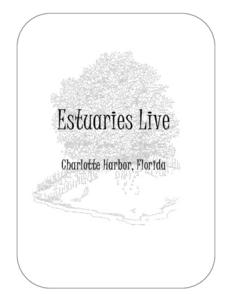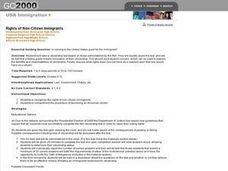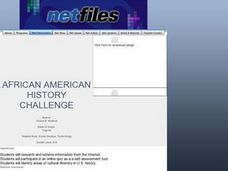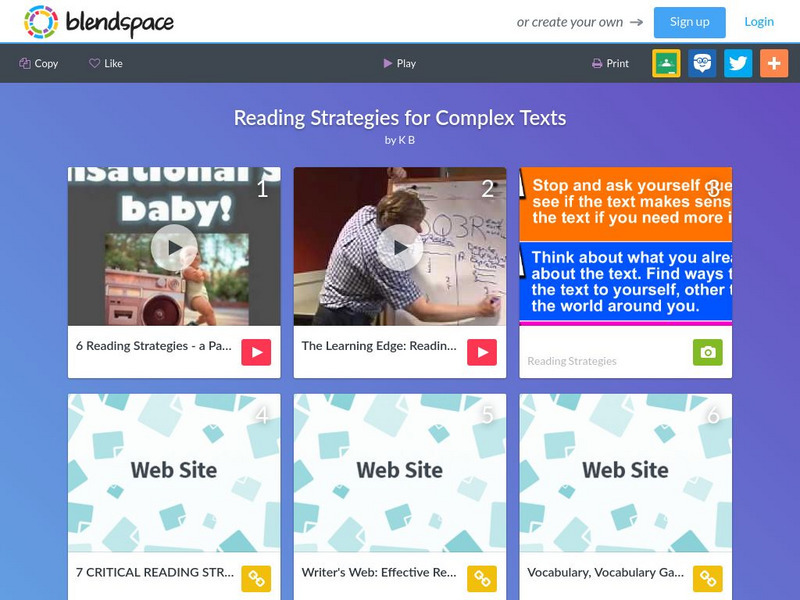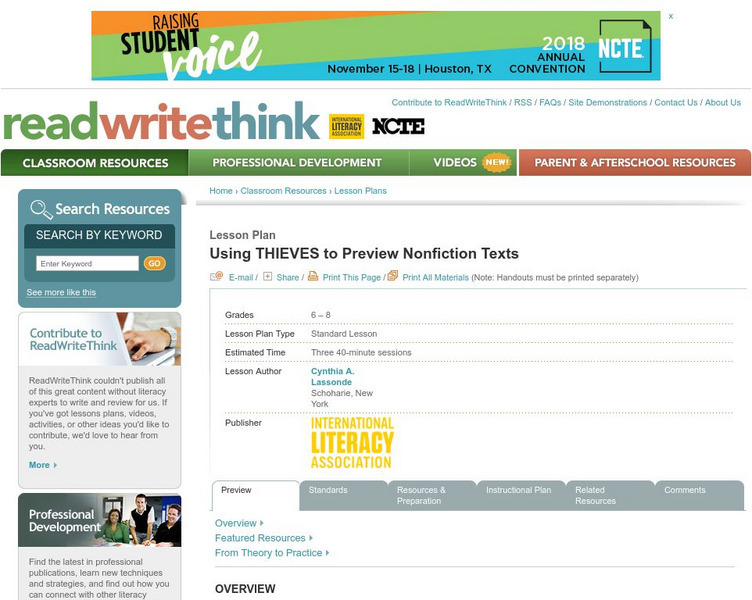Curated OER
Cultural Lit. 30: The Constitution & Native Americans
Students identify and consider United States Constitutional origins in American Indian culture.
Curated OER
Where Are Our Prime Ministers Found?
Students research the provinces that prime ministers represent, parties that they led, and possible patterns established by the history of politics in Canada.
Curated OER
Estuaries Live Charlotte Harbor, Florida
Pupils reorganize sentence strips into paragraphs to learn about seagrasses. They learn vocabulary and facts about sea grasses using the paragraphs once they are reconstructed. They continue their study with a number of associated lessons.
Curated OER
Children of the World
Pupils examine case studies of students's lives in different societies around the world. They identify the roles and rights of pupils in different societies. They create a visual model of a child summarizing roles and rights.
Curated OER
Primary Sources
Pupils write personal facts on a photograph of themselves to create a Primary Source. They then define Primary Source and list examples as a class of places where they could find primary sources. They also discuss the importance of...
Curated OER
Rights of Non-Citizen Immigrants
Students continue their discussion of if coming to America was the best thing for a group of immigrants. As a class, they complete the citizenship test offered by the INS. They research the benefits and responsibilities of being a...
Curated OER
Interactive Art: Let's Make It Happen
Students examine art by Christopher Janney. They discuss what the art is showing and what it means to them. They create their own piece of interactive art.
Curated OER
Anasazi Pueblo Period: 700-1050 A.D.
Sixth graders investigate the main ideas and information about the Developmental Pueblo period, from 700-1050 A.D., of the Anasazi.
Curated OER
Anasazi Basket Weaving: 500-700 A.D.
Sixth graders examine the main ideas and information about the Modified Basket Maker Period 500-700 A.D. of the Anasazi.
Curated OER
Charlotte's Web Venn Diagram
Students, together as a class, construct a Venn diagram of characteristics they see in two classmates. Then, they independently create another Venn diagram comparing/contrasting two characters from the story Charlotte's Web. They share...
Curated OER
Teaching the Tr'panier Trapezoid Kite
Young scholars analyze how the parts of a system go together and how these parts depend on each other. They comprehend the forces in terms of strength and direction. Students observe, measure and describe weather indicators.
Curated OER
Athabaskan & Navajo Migration
Students examine the migration patterns of the Athabaskan and Navajo tribes. After taking notes on a lecture, they compare and contrast the two groups. To end the lesson, they write their favorite Navajo story in their journals.
Curated OER
Let's Recreate Our World To Make It Better
Students examine art by artist by Tom Rollins. They discuss the painting and what it means to them. They create their own models of apartment complexes based on ideas from literature.
Curated OER
Murals That Fit
Pupils examine different pieces of art that are considered murals. They discuss the differences between paintings and murals. They design and paint their own murals for different sites in their school.
Curated OER
African American History Challenge
Middle schoolers research and retrieve information from the Internet. They participate in an online quiz. They identify areas of cultural diversity in United States history.
TES Global
Blendspace: Runners Active Reading Process
A nine-part learning module on using the acronym RUNNERS to learn active reading strategies through text, videos, a PowerPoint, a web link and a quiz.
TES Global
Blendspace: Reading Strategies for Complex Texts
A nine-part learning module on reading strategies including links to videos, images, websites, and activities.
ReadWriteThink
Read Write Think: Using Thieves to Preview Nonfiction Texts
Contains plans for three lessons that introduce a nonfiction prereading strategy with the acronym THIEVES, which stands for Title, Headings, Introduction, Every first sentence, Visuals and vocabulary, End Questions, and Summary. In...
ClassFlow
Class Flow: Martin Luther King, Jr. Comprehension Activity
[Free Registration/Login Required] This lesson is geared for a comprehension activity for the book, "My Brother, Martin" by Christine King Farris (MLK Jr.'s sister). It is intended to be a comprehension lesson based around the reading...
ClassFlow
Class Flow: Two Bad Ants Realism vs. Fiction Writing
[Free Registration/Login Required] This flipchart was designed to accompany Scott Foresman Reading- 3rd grade- Unit 6- Two Bad Ants by Chris Van Allsburg. It covers a variety of reading strategies, including making predictions, context...
Library of Congress
Loc: Teachers: Personal Stories and Primary Sources
Students will explore the value of personal stories and first-hand accounts when exploring history, in this case, the events of the early twentieth century, which included World War I and the Great Depression. Through this five-unit...
Library and Archives Canada
Nlc: Defining Primary and Secondary Sources
Libraries and archives hold documents and books that can be used for your research projects. Learn how to divide and identify them into primary and secondary sources in this tutorial.




